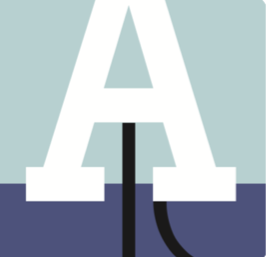
Vortex Shedding phenomenon,
its cause, vibration and its suppression.
When a fluid flows around a bluff body, such as a circular cylinder, the flow separates and rolls up into vortices which, after a period of growth, are shed and move downstream to form a periodic wake.
This periodic shedding of vortices creates periodic forces on the cylinder with components both in-line and perpendicular (cross-flow) to the fluid flow direction.
If, like many risers and conductors, the cylinder is sufficiently flexible and has a natural frequency which is close to the frequency of vortex shedding, the two frequencies ‘lock-on’ to the structure’s natural frequency, the amplitude increases and the vortex shedding forces are amplified through a feedback mechanism. This self-sustaining vibration, at the structure’s natural frequency is called vortex induced vibration or VIV. Generally, cross-flow vibrations are an order of magnitude larger than in-line vibrations.
Vortex induced vibration can lead to large amplitudes of motion cross-flow and severe cyclical stress in the affected structure which can cause failure through fatigue.
Additionally, when a cylinder vibrates at large amplitude cross-flow there is a large increase in the dynamic drag of the structure which can create additional operational problems. Typically this increase in drag is up to a factor of three times the stationary cylinder drag coefficient at an equal velocity/Reynolds Number.
ALLBROWN UNIVERSAL COMPONENTS LTD OFFER TWO SYSTEMS FOR MITIGATION AND CONTROL OF VIV – A STRAKE SYSTEM WITH A LONG TRACK RECORD (SEE LIST) AND AN ADVANCED SYSTEM, THE VENTILATED TROUSER VIV SUPPRESSOR, ( SEE LIST AND VIDEO DEMONSTRATIONS )
FUNCTION OF THE ALLBROWN STRAKE SYSTEM
At any particular angular location around the riser or cylinder the system controls the boundary layer separation (the fundamental cause of vortex shedding) and prevents the normal formation of alternate vortices from occurring.
In the axial dimension it continually alters the position of boundary layer separation, thus reducing the lateral forces by destroying the axial correlation between vortices along the length of the structure.
The total drag load is decreased due to the controlled transition of the fluid flow from laminar to turbulent across the current range thus avoiding the peaks generated by unstable boundary layer separation through the Critical Reynolds Number regime.
FUNCTION OF THE VENTILATED TROUSER VIV SUPPRESSOR (VT)
The VT Suppressor functions as a porous sleeve comprising elements that do not shed coherent vortices, covering and isolating the bluff body from vortex excitation.
The VT suppresses flow induced vibrations by eliminating the excitation mechanism throughout the sub-Critical and super-Critical Reynolds Number regions and most notably in the Critical Reynolds Number region.
Unlike strakes, there is no additional drag imposed on the structure under consideration, it has a negative lift coefficient (self correcting), achieves up to 97% suppression of VIV, completely eliminates high frequency vibrations – a major cause of reduced fatigue life. The VT is versatile.

